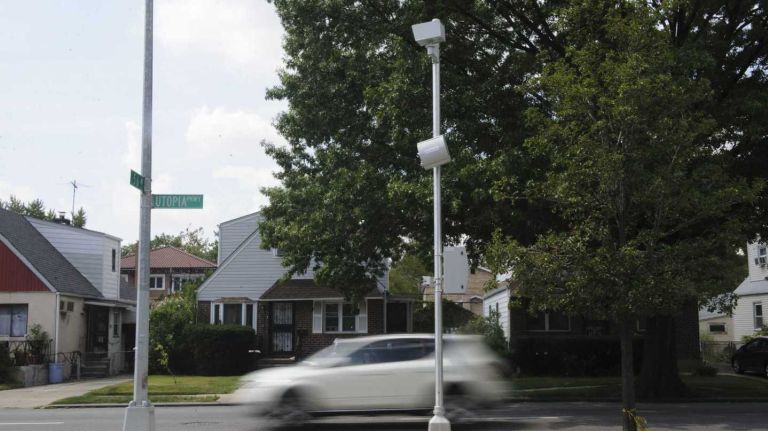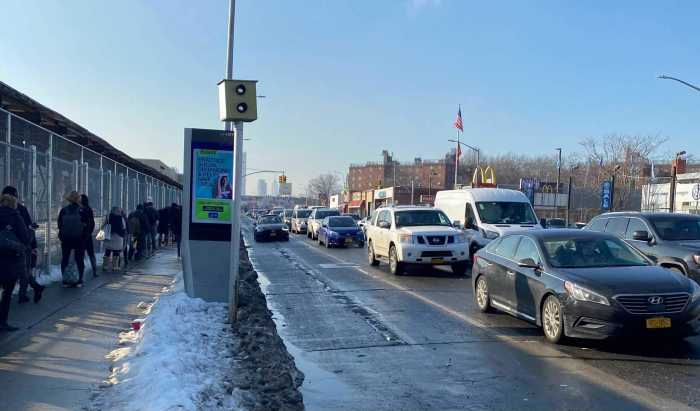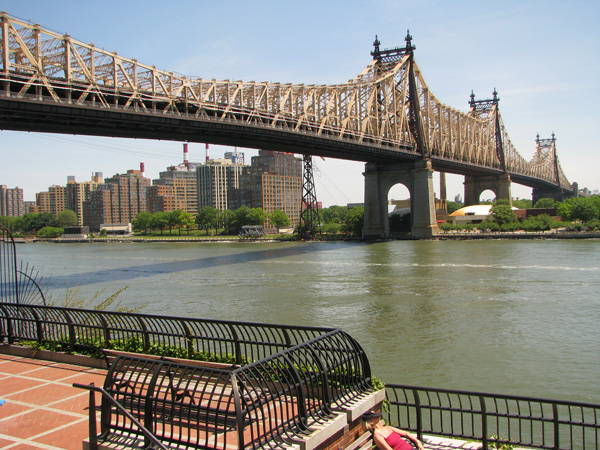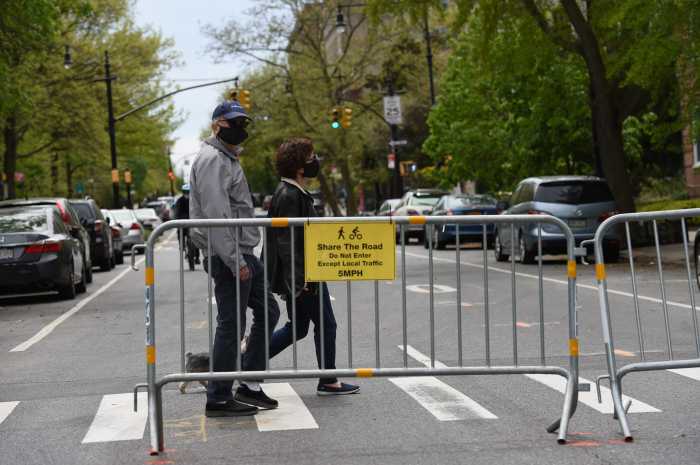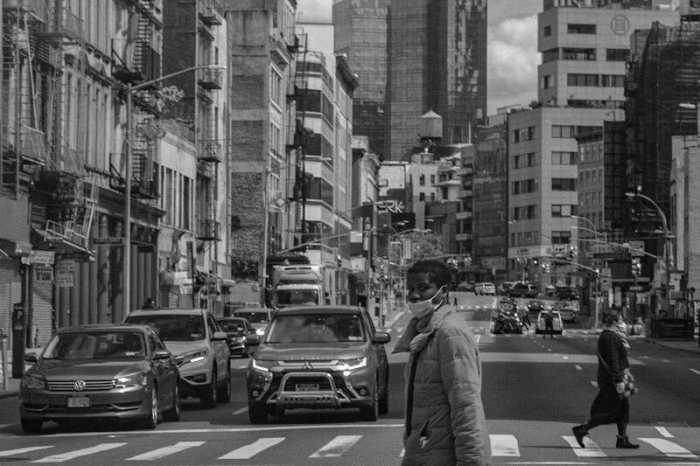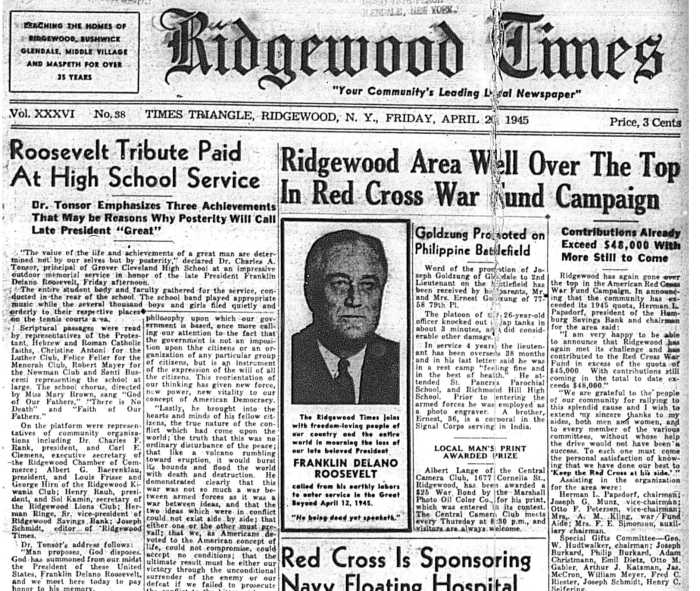City officials and street safety advocates are gearing up a push in Albany to allow the city to control its own automated speed/red light cameras and other safety measures on its roads.
DOT Commissioner Ydanis Rodriguez planned to travel to the Empire State’s capital with Deputy Mayor for Operations Meera Joshi Tuesday, May 10, as the state authorization for the city’s speed cameras is set to expire by the end of June.
“We have one message: We need help from Albany,” said Rodriguez during a press conference Monday afternoon.
He spoke at the East Village intersection where 21-year-old NYU student Raife Milligan was fatally struck last week — one of 12 New Yorkers who lost their lives on the roads in the seven days following DOT and Mayor Eric Adams’s launch of a billboard campaign encouraging drivers to slow down.
New York City can currently only set up cameras to catch speed demons within a quarter-mile radius of a school, and they can’t issue $50 fines unless lead-footed motorists are caught during weekdays from 6 a.m.-10 p.m.
A DOT chart shows how crashes relative to the number of cars on the roads increases during the overnight hours and on weekends, especially from midnight until the morning rush.
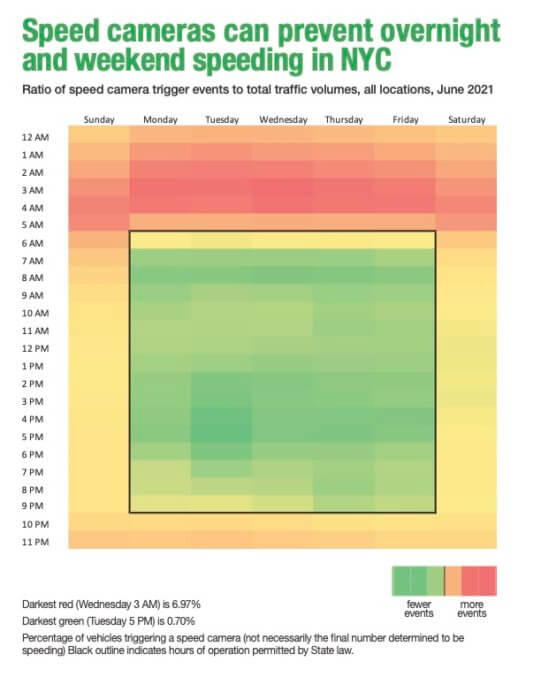
That means that most of the time, or 52% of the hours in a given week, motorists can evade getting ticketed, and 59% of traffic deaths happen during that time, according to the city.
In places where the city installed the automated enforcement tech, speeding declined by 72%. For example, Grand Concourse in the Bronx and Union Turnpike in Queens saw decreases of 89% and Fourth Avenue in Brooklyn had 88% fewer speeders.
Traffic deaths dropped 55% during hours of operation where there were cameras.
Crash fatalities have continued to rise as Mayor Adams took office this year, following an already record year in 2021.
“There’s so much blood that we have in the streets that we can stop,” Rodriguez said.
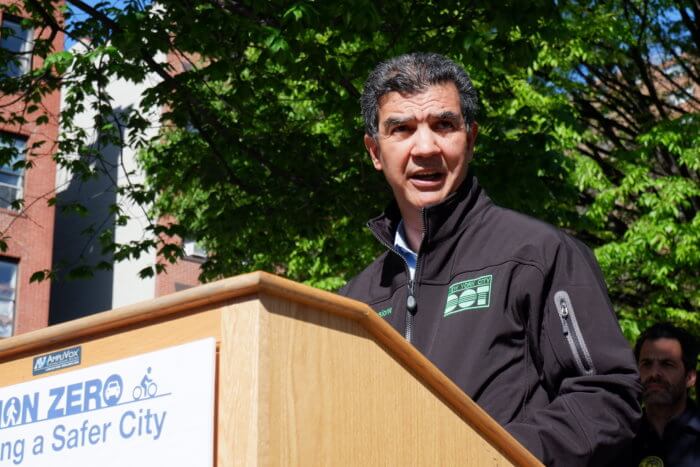
The city has nearly 2,000 speed cameras across 750 of the so-called school zones, which will have to deactivate on July 1 unless the state lawmakers continue the program.
There are also 150 cameras at red lights — a number capped since 2009 — along with cameras on buses and in bus lanes to catch scofflaws hogging the red-painted paths for public transport.
The red light cameras are slated to sunset on Dec. 1, 2024, if they’re not renewed, according to DOT spokesperson Vin Barone.
The agency and the advocacy organization Transportation Alternatives are pushing for Albany to give the city full control over its own streets, including 24/7 automated enforcement and allowing municipal officials to change the speed limits, which currently require state authorization.
They also want to increase the fines for speeding, which are currently $50 per violation and don’t increase with each additional offense.
The majority of drivers only get ticketed once, or 52%, according to DOT stats from 2020, but a whopping 45,805 vehicles, or 2%, have 10 or more violations attached to them, prompting the agency to push for steeper penalties for repeat offenders.
Governor Kathy Hochul has voiced support for giving Gotham more say in its own affairs.
“I personally don’t want to be deciding where red light cameras go in school zones. I think cities should worry about that stuff,” she said at a Regional Plan Association event Friday. “We have enough to worry about.”
The primary way to make streets safer, advocates say, is redesigning the roads to discourage reckless driving in the first place, which is already completely in the city’s control, and the cameras are only a fail-safe to reduce the carnage.
“Speed safety cameras also act as a quick-to-implement protective stop-gap measure on a dangerous street before it is redesigned for safety,” reads a brief published Tuesday by Transportation Alternatives. “While street redesign remains the gold standard for reaching Vision Zero, speed safety cameras are a proven tool to save lives.”



